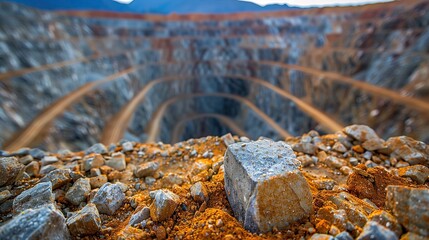
Geophysical surveys function invaluable tools in the exploration and understanding of the Earth’s subsurface. through the size and evaluation of various bodily properties, those surveys intend to obtain several key goals. Geophysicists employ more than a few techniques to investigate the composition, shape, and dynamics of the Earth’s indoors, as well as to delineate sources and examine environmental conditions.
Why do we need Geophysical Surveys?
Geophysical surveys are essential in various fields:
Identifying Subsurface Structures: Geophysical strategies, together with seismic surveys, ground-penetrating radar, and electrical resistivity tomography, permit the detection and imaging of subsurface structures. those surveys provide valuable data approximately the composition, density, and geometry of geological formations, assisting in the identification of ability resource deposits, inclusive of minerals, oil, and fuel reservoirs.
Mapping Geological functions: Geophysical surveys help in developing exact maps of subsurface geological functions, which include faults, folds, and rock layers. This facts is important for understanding the geological records and structure of a place, assisting in resource exploration and geological modeling.
Assessing resource capability: By measuring physical residences consisting of magnetic susceptibility, electrical conductivity, and seismic pace, geophysical surveys provide insights into the capability presence and best of subsurface resources. This information assists in assessing the monetary viability and feasibility of useful resource extraction initiatives.
Environmental and Engineering programs: Geophysical surveys are used in environmental research to evaluate groundwater sources, come across contaminant plumes, and display geological risks along with landslides and sinkholes. In engineering tasks, these surveys assist in site characterization, basis layout, and infrastructure planning by way of supplying information about subsurface conditions.
Cost-effective Exploration: Geophysical surveys can cover huge areas rather quickly and at a decreased value as compared to standard drilling methods. by means of offering initial records on subsurface geology and useful resource ability, these surveys help in focused on exploration activities greater efficaciously, lowering exploration risks and charges.
Tracking and management: Geophysical strategies are also hired for monitoring geological procedures, which include reservoir tracking in oil and gas manufacturing, tracking subsidence in mining areas, and tracking groundwater levels and flow styles. This fact is important for powerful resource management and environmental stewardship.
What is the scope of Geophysical Surveys?
Overall, the scope of geophysical surveys is massive, encompassing programs in mineral exploration, oil and gas exploration, groundwater exploration, environmental research, engineering investigations, and geotechnical assessments. those surveys play a crucial function in lowering exploration dangers, optimizing resource extraction, and facilitating knowledgeable selection-making in diverse industries reliant on subsurface information.
What is the concept of Geophysical Surveys?
Geophysical surveys are extensively utilized in useful resource exploration, inclusive of the search for minerals, oil, and fuel deposits. through detecting anomalies related to geological formations or mineralization, geophysicists can become aware of potential areas for similar exploration. additionally, those surveys are treasured in environmental and engineering programs, which include assessing groundwater sources, detecting underground contaminants, and comparing the stableness of creation sites.
Conclusion:
Overall, the objectives of geophysical surveys revolve around enhancing our understanding of the Earth’s subsurface and facilitating knowledgeable decision-making in useful resource exploration, environmental safety, and infrastructure improvement. by harnessing the concepts of physics and superior generation, those surveys stay crucial tools in addressing the challenges and opportunities supplied by our planet’s dynamic and complex geology.